Podcast: Download
Subscribe: Apple Podcasts | RSS

Ask any search engine, and it will throw up plenty of memory improvement book recommendations with techniques that may or may not work for you.
Which one do you choose?
And, could there be any alternative ways to train your brain to remember and recall everything you want to?
On this page, I’ve shared nine Memory Palace book recommendations to make your search easier. I’ve read each one personally (in some cases several times). With each recommendation, I’ll let you know a bit of my personal history with them and how they’ve helped me specifically.
At the end, I’ll also show how to sharpen your memory by putting the ideas in these books to use.
Here’s what I’ll cover:
- 10 Best Books to Learn Memory Techniques and Improve Your Memory
- 3 Better Ways to Improve Your Memory
Ready?
The 10 Best Memory Palace Books
Many others talk about the concept of Memory Palaces. As we go through this list, keep in mind that I’ve only included these books because these books go further than just chatting about the technique as an idea.
They show you what the technique is and help you put it into action.
With that point in mind, let’s get into this treasure trove of memory improvement ideas, including the art of building memory palaces.
1. Memory Craft by Lynne Kelly
Perhaps the most important memory improvement author at the moment, is Lynne Kelly.
Her book, Memory Craft, offers a unique exploration of the Memory Palace because she embeds it in the full tradition. Her approach is also both scholarly and deeply personal.
For example, she uses a lot of neighborhood walks to form her Memory Palaces. And drawing upon the tradition, she uses animals linked to the alphabet to assign her images.
Kelly is also well-versed in the Aboriginal variation of the Memory Palace technique, known as the Songline. She creates memory boards (lukasa) and helps you understand how they works as mini-Memory Palaces with practical examples from her own learning projects.
Overall, Memory Craft is a celebration of the diverse ways humans have committed information to memory and transmitted it. This book will not only educate you, but also provide endless fascination and inspiration as you begin your exploration of the ultimate memory technique.
2. Moonwalking with Einstein: The Art and Science of Remembering Everything by Joshua Foer
First published in 2011, Joshua Foer’s bestseller debuted at No. 3 on the New York Times bestseller list and stayed on the list for eight weeks. I’ll never forget how inspired I felt when I read it the same week it appeared in bookstores.
In his engaging writing style, Foer takes you on a fascinating journey through how the mind of a memory champion works. From that perspective, the book goes in-depth about the mnemonic techniques they use to store memories.
A freelance science journalist, Foer learned the technique of memory training while researching the US Memory Championship. At the contest, Foer observed how people would memorize an entire deck of cards in just a couple of minutes.
This fascinated him and got him thinking whether the skill could be learned. Foer discovered that individuals who aced memory contests used special strategies handed down from the ancient Greeks to visualize things.
Most people use Memory Palaces by visualizing a structure (such as their home) in their mind — these Memory Palaces usually have several different rooms and people inside who represent what they are trying to remember.
He decided to test his own memory power.
A year later, he won the US Memory Championships against champion ‘mental athletes’ who could memorize the exact order of ten shuffled decks of cards in less than an hour.
The book draws on thorough research, the history of memory studies, and various tricks of mental champions.
I have a personal connection to the book too, a connection that never would have formed had I not read it those many years ago. In the opening pages, Joshua Foer discusses a pin worn by my dearly departed friend and mentor Tony Buzan.
That pin was given to various people by Buzan as the “Warrior of the Mind Emblem for Outstanding Contributions to Global Mental Literacy.” I’ll never forget when Buzan awarded it to me. Anyhow, when you come across that part of Moonwalking with Einstein, this is what the pin looks like:
3. The Art of Memory by Frances A. Yates
Published in 1966, The Art of Memory is still referenced in influential memorization guides and books today.
The author, France A. Yates, traces the development of the mnemonic systems from the Simonides of Ceos era through the Renaissance until the 17th century when scientific methods were initiated.
This is the oldest mnemonic strategy and is also known as the method of loci.
The book narrates the story of Simonides, who was hired by a nobleman to read poems during a banquet. After the reading, he was asked to go outside to meet someone. Before he could re-enter the banquet hall, it collapsed, killing everyone inside.
All the bodies were mangled beyond recognition. The story goes that Simonides used his memory to recall the faces and names of every person that was killed. He realized the importance of recalling facts based on their locations or the method of loci.
These ideas hold good even now.
For example, if a defense lawyer needs to recall evidence during a trial, he can first create mental images of a place familiar to him – maybe his home – and peg each piece of evidence to a room.
During the trial, he can then recall those pieces of evidence by mentally walking through his house.
But there’s more to it than memory stunts for winning court cases. In this video, I talk about my some of the problems with the book. They relate to Yates’ hotly contested interpretation of a Renaissance memory master named Giordano Bruno.
Don’t get me wrong: The book is excellent. But my own research has shown that her interpretations of Bruno as misguided. She’s much stronger on Robert Fludd, however. I’ll introduce you to him a little bit later in this list.
4. The Memory Palace of Matteo Ricci by Jonathan Spence
In this book, the author explores the story of a Jesuit priest named Matteo Ricci who lived during the 16th century, and how he used special mnemonic memory techniques to convert the Chinese to Christianity.
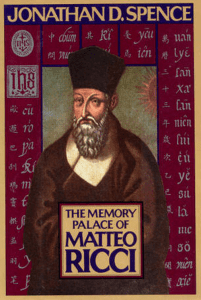
The story goes that Ricci became a willing member of that mission and sailed to China as a missionary. For more than three decades, Ricci used his vibrant personality to convert the Chinese to Catholicism. I imagine he knew a lot about how to memorize speeches.
During his efforts, the Jesuit priest believed he could convert more people by impressing them with his learning. That was when he started to use mnemonic devices to memorize huge amounts of information.
One of his key tasks was to convey basic Christian principles to the Chinese people in a manner they could appreciate and learn from. So he turned to memorization techniques for help.
He taught the Chinese people the art of creating memory palaces through images in their heads, helping them store several pieces of information in their mind and be able to recall it later.
The images acted as a narrative or a story helping the Chinese understand the Bible and its teachings through their own cultural and spiritual norms.
Overall, I found this book so interesting, I made it a priority to visit Ricci’s grave the first time I visited Beijing. Here’s a pic from my personal travel collection:

Beyond that, Ricci inspired me to start learning Chinese. In fact, when the Chinese Language Institute in Guilin heard me talk about Spence’s study of Ricci on the Magnetic Memory Method Podcast, they invited me to given a presentation at their school. I did and it was a lot of fun. I almost felt like I was leading a life much like Ricci’s own.
Although you might not wind up having an adventure like I did after reading this book, another thing I love about it is how it gives you insight into Ricci’s approach to memorizing Chinese characters. It did a lot to help me come up with my own.
5. How to Remember Anything by Mark Channon
In this book, memory grandmaster and author Mark Channon focuses on how a radically improved memory can add more value to anyone’s personal and professional life.
It is filled with memorization techniques that teach you how to recall numbers, dates, and facts, as well as ideas on how to remember them by using different processing strategies.
This makes Channon’s book one of the most practical ones on the art of memory improvement.
It comes with innovative exercises that can build the confidence and vocabulary of readers. It also includes core strategies that can make memories and mental images more ‘magnetic’.
An aspect that has helped me the most from Channon’s book involves the exercises he suggests. They will give your memory a fantastic workout.
6. Unlock Your Amazing Memory: The Fun Guide That Shows Grades 5 to 8 How to Remember Better and Make School Easier by Brad Zupp
If your children are struggling with learning in school, this book has plenty of ideas you could use.
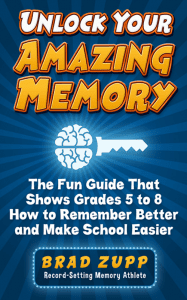
These strategies are scientifically proven and claim to have helped thousands of students — those who want to improve their grades, who are forgetful, lack motivation, prefer some subjects over others, feel stressed out or bored in class, and those who have a hard time completing their homework on time.
The book is based on The Feats of Memory show which is an assembly program that was created by the author, Brad Zupp himself. Teachers who have used his techniques say that it transformed the way their students processed their lessons and made tremendous improvements.
The guide also dives into the main issues that affect our attention spans – our memory and focus. This makes it especially useful for students in grades 5 to 8. Children in grades 3 and 4 can also benefit from it with some help from parents and teachers.
Zupp’s devotion to helping young people has inspired me many times over the years. I always recommend this book when parents ask me for suggestions to help their kids learn memory techniques.
7. The Victorious Mind: How To Master Memory, Meditation and Mental Well-Being by Anthony Metivier
So maybe it’s cheating a little bit to include your own book, but if you’re looking for the best books to help you learn memory techniques it’s one I highly recommend!
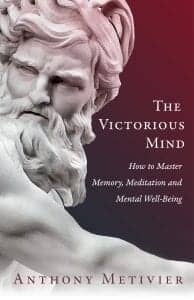
But more than a story of self-transformation, it offers detailed guidance through the techniques I used to release myself from the haze of lithium along with the illusion of self.
This book is ideal not just for those struggling with mental illness but for anyone suffering mental malaise – whether it’s digital amnesia and scatterbrain, depression, or “control freakism.”
I share a lot of personal stories in this book. That was hard to do, but I got myself to do it because using memory techniques helped save my life. I don’t mind exposing my troubled background if it will help others receive the help they need too.
8. Mnemonic Methods by Robert Fludd
Like Giordano Bruno, Robert Fludd believed it was possible to know and understand everything. That said, he also included a twist on the notion of “everything” by suggesting that we need to also know how to contend with two other things:
- Nothingness
- Incoming information
The nothingness part is a bit complicated because he basically says that nothing is always a something. Philosopher Eugene Thacker has explained how this concept works in more detail than we need to get into here.
In Mnemonic Methods, translator Paul Ferguson has cut out everything from Fludd’s The Metaphysical, Physical, and Technical History of the Two Worlds, the Major as well as the Minor that doesn’t have to do with memory.
This helps us as readers focus only on Fludd’s mnemonic ideas, and they are powerful.
In brief, Fludd helps the reader establish:
- Memory Palace systems
- Alphabet pegwords
- A number shape system
These days most of us memorize numbers with the Major Method and build that mnemonic system out to a PAO System. Nonetheless, Fludd’s mnemonic examples are great to go through and can help you arrive at ideas of your own.
What I appreciate about this translation above all is that the publisher has included Fludd’s original Latin. As a student of Latin myself, it is wonderful to be able to practice the language while going through incredible instructions about how to use memory techniques.
Want to know more? Here’s a full review of this book in the context of Robert Fludd’s life.
9. The Hermetic Art of Memory
I was delighted when Lewis Masonic sent me The Hermetic Art of Memory. Here’s a full video review:
The two things I love most about this book are:
- Its review of the classic memory techniques people have been using since ancient times
- Its many wonderful philosophical points
If you’re into Zen and like to read from a teacher who inspires you to take action, this book uses a lot of philosophical ideas to help prompt you to take action.
10. Advanced Memory Palaces
Joe Reddington told me during a recent discussion the he wrote Advanced Memory Palaces because he’s “cynical” about how many other books talk about this incredible memory technique.
I agree with him that there is a real problem out there – something I outlined above when discussing Yates’ The Art of Memory.
I’m sharing details about Advanced Memory Palaces because I think Reddington not only addresses the problem quite well. His solutions are realistic and well-worth exploring.
His concept of the “skip list” is compelling and he brings all kinds of experience from computer programming to his thinking about using location-based mnemonics.
Personally, I have found it tremendously thought-provoking and that is itself of tremendous value for anyone serious about mastering their use of this technique.
With all these wonderful books in mind, let’s turn now to how you can get the most from reading them.
What To Do After You Read A Memory Palace Book
All these books on memory are sure to give you a wonderful insight into the art of brain training using mnemonic techniques, including Memory Palaces.
However, let’s face the facts:
Learning something by reading a long book may not be everyone’s cup of tea. Unless you diligently make notes and push yourself to try out the instructions, your chosen Memory Palace book will end up being just a dusty one on your bookshelf.
What could be more achievable is this: Make a few small lifestyle changes, or learn from online videos and courses that you can re-read quickly or listen to any time.
Here are three alternative ways to improve your memory based on lifestyle that could be far easier to implement. Work with these and you almost certainly will be able to read more books, more often and get more out of them.
3 Better, Alternative Ways to Improve Your Memory
A few lifestyle changes, and creating Memory Palaces using the Magnetic Memory Method regularly will help you sharpen your memory with just a little daily effort from you.
Let’s look at three ways you can do this.
1. Practice Mindfulness
Mindfulness is about listening to your mind and body, being aware of your surroundings, and being completely present in the moment you live in. Mindfulness expert Jon Kabat-Zinn calls it “moment to moment non-judgmental awareness”.
Practicing mindfulness meditation for just 10-20 minutes a day can work wonders on your memory. You can also do it while doing your daily chores – just by stopping for a minute to take in the sensation of whatever you’re doing – eating a meal, walking to work, or driving down a busy road.
Mindfulness is known to increase blood flow to the brain. It can strengthen the network of blood vessels in your cerebral cortex and reinforce memory capacity.
Meditation reduces stress on your brain and can be effective in improving memory — even after a brain injury.
A recent study proved that mindfulness improves your working memory. A few participants spent a few weeks learning to focus on breathing and body sensations, being aware of what was happening around them, and redirecting their attention when they were distracted.
After this, they took memory tests that clearly showed an improvement in short-term memory and a slight increase in hippocampus volume.
And just so you know that I walk my talk on this one, here you see me recite 32 verses of Sanskrit in front of a live audience while meditating:
It is really fun and so much more powerful when you combine meditation with a Memory Palace strategy!
2. Try Word Puzzles and Games
Word puzzles like crosswords, word association games, and Scrabble can stimulate your brain. They activate parts of the brain that deal with vocabulary and word finding, forcing the brain to stay active. It can delay any cognitive decline due to aging and mental illness.
Research proves that using crossword puzzles to teach a second language is an effective strategy of vocabulary instruction. Paper-based and interactive puzzles are used frequently in language teaching, to make learning interesting for teaching spelling rules, lexical meanings, and synonyms.
Opt for the old-school way of doing it — use newspapers or puzzle books you can scribble on, rather than mobile apps that pop up distracting ads or tempt you to switch away to social media.
Remember to vary the type and difficulty of word puzzles frequently. Once you’re an expert at simple crosswords, go for more cryptic ones.
3. Build Memory Palaces using the Magnetic Memory Method
Memory Palace is a powerful mnemonic tool to develop and use your spatial memory in a way that unlocks the power of autobiographical memory, episodic memory, semantic memory, procedural memory, and more. You can also move information into long-term memory faster for years to come.
Building Memory Palaces using the Magnetic Memory Method will provide you with the ultimate organizational system for learning, committing things to long-term memory, and recalling anything.
The trick is to associate information to parts of a location you’re familiar with. This helps your brain file things to remember them easily.
So if you’re learning a new language, peg all words related to travel on your living room sofa, words related to the weather on your dining table, and so on. You could use familiar locations so that you spend your time in quickly memorizing a lot more information, and reduce cognitive load.
The more you practice mnemonic methods for learning and recalling vocabulary, routes, names, and so on, the easier the process becomes.
Improve Your Memory Magnetically with These Books on Memory Improvement
The six books on memory recommended above (and any others like the one by Bartok) will give you a good understanding of the history of memory improvement techniques and ideas on how to build Memory Palaces.
But, creating memory palaces regularly using the Magnetic Memory Method can be the quickest and most effective way to learn, memorize, and recall anything.
If you’d like to get started (for free), sign up for my memory improvement kit.
And before you go, please let me know:
What are your favorite memory improvement books?
Related Posts
- A Polyglot Club For Memory Palace Builders
Use this resource to find great foreign language vocabulary words for memorizing in your Magnet…
- Tap The Mind Of A 10-Year Old Memory Palace Master
Alicia Crosby talks to us about how she memorized all of Shakespeare's plays in historical…
- Tap The Mind Of A 10-Year Old Memory Palace Master
Alicia Crosby talks to us about how she memorized all of Shakespeare's plays in historical…

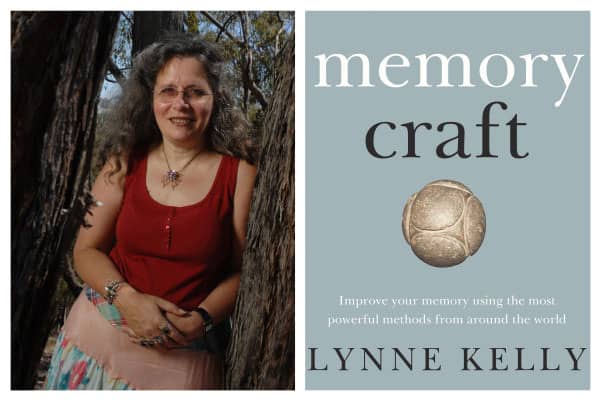
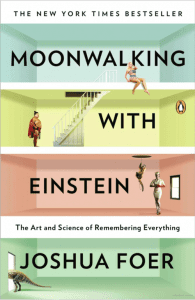


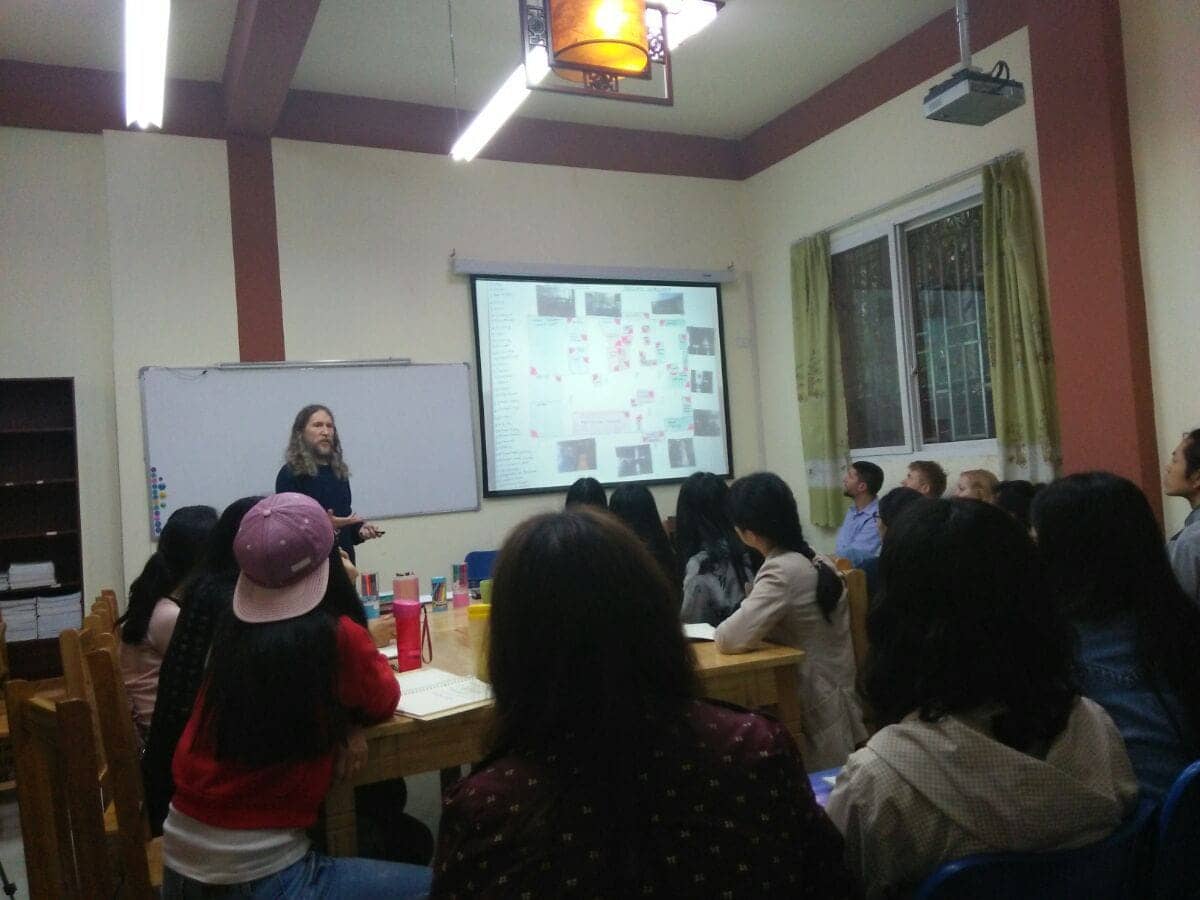
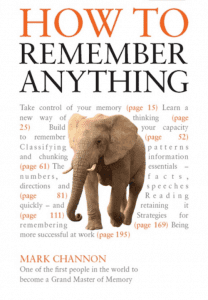
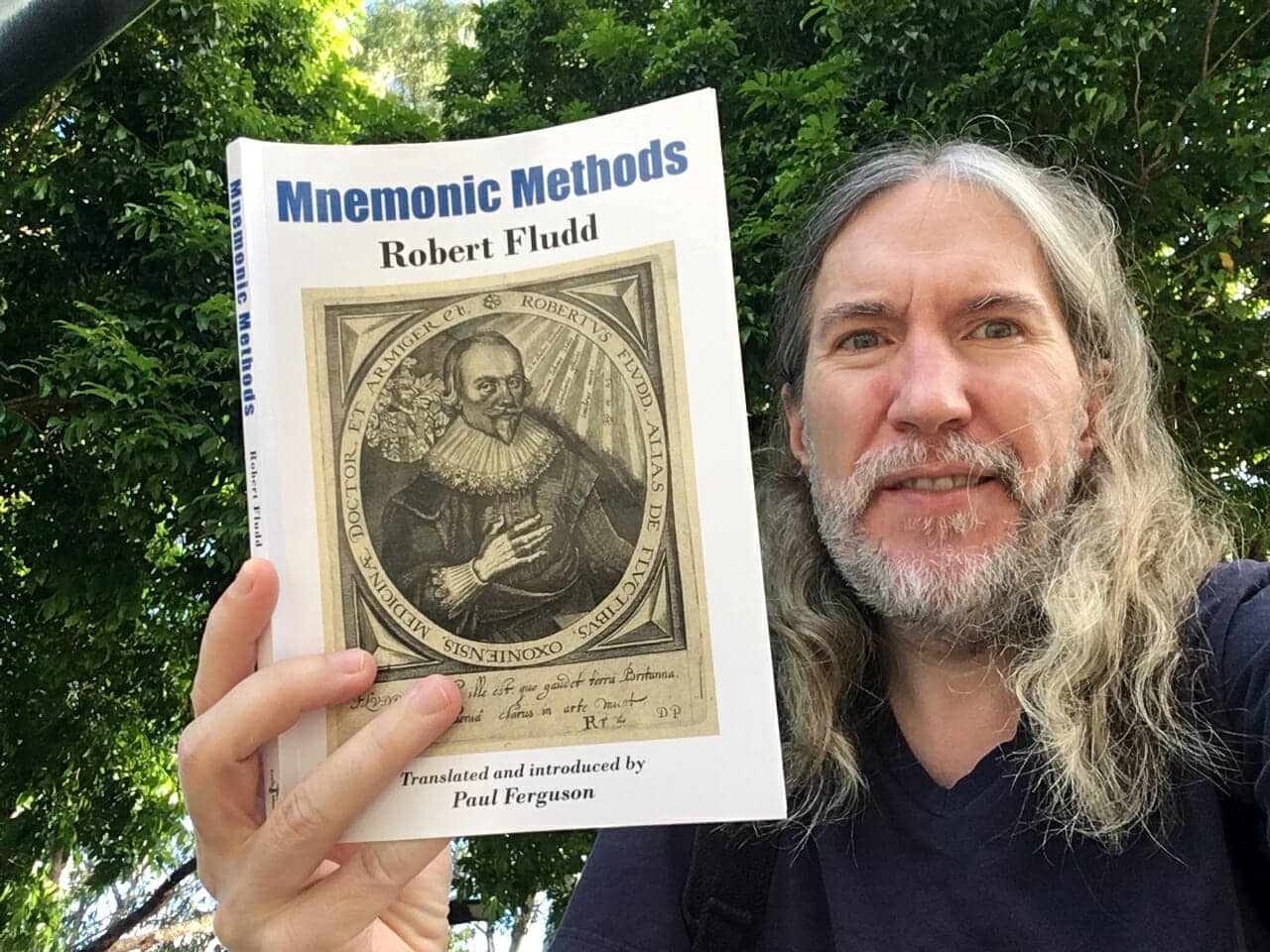
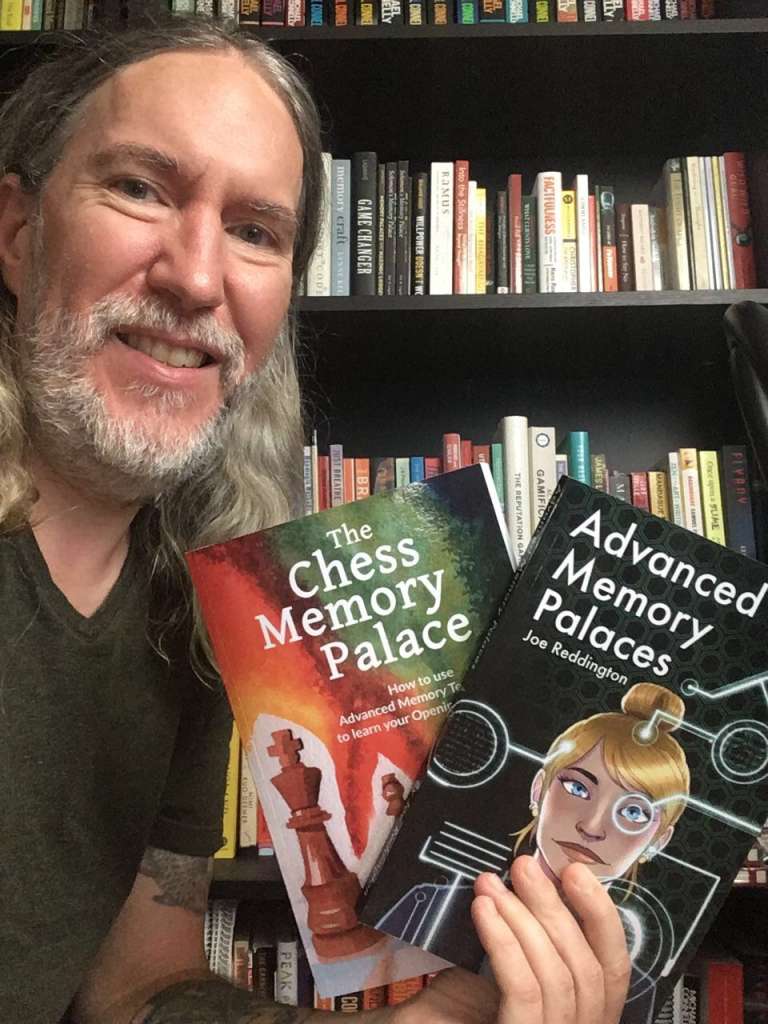







28 Responses
Wow! Really great ideas about the Memory Palace!
Thanks for stopping by, Prasanna.
Have you read any of these books yourself? If not, which one seems most interesting to you?
Wow! I’m going to apply for Cambridge College, but what’s next step after reading these if I want to be legendary in memory techniques? Which books are most effective and will improve my learning skills to pass my exams 99%?
Great goal!
I would suggest reading a variety of books and practicing memorizing the content that will help you pass those exams rather than generic information. Some practice with generic info is a good thing, but you want to move past it as quickly as possible so you can deal with volume and complexity a.s.a.p.
Would you please name some other resources or books to get deeper into the method of loci and and the memory palace technique? I want to use this for my studies at an advanced level.
Thanks, Miana.
There are countless books to read.
If you want to specifically improve your abilities when it comes to studying, you might look at Learning How to Learn by Barbara Oakley and other books like it.
Dr Metivier, what is next step after the above list?
I wanna learn the memory palace and loci method deeply and use it a a core technique in my life please help and I think as Peter of Ravenna devised more than a hundred thousand memory-places. I want to reach that. Can you give me some more resources?
Thanks for this, Zahra.
If you want to create 100,000 Memory Palaces, then you will have more than enough reading material from this list and will want to get started right away.
The real advice I would give is to not try to copy the journey of anyone else. Do you actually need so many Memory Palaces? Wouldn’t it be better to look back on life when you are old and see that you made full use of less rather than having an excess of Memory Palaces you never actually used?
Hi Anthony,
Do we have any secret methods in mnemonics?
Which may not be revealed until today? And maybe there is an unknown book or treasure?
After searching, reading, and using over 100 classic and modern books, I knew that all methods were the same, and that your course was probably the best course on the web, so do we have a particular unknown method in the art of memory?
In fact, are the methods used to encode information and perform complex tasks actually an advanced form of our own memory methods? Thanks.
Thanks for this, Zahra.
I’m surprised that after reading 100 classic and modern books that you would conclude that all memory techniques are the same. That has not been my conclusion or experience at all.
Certainly there are books yet to be discovered or explored – and for each individual, this will always be true. None of us know what we don’t know.
There is currently a modest revival going on of certain Renaissance memory books. The most recent of note is The Hermetic Art of Memory, which combines two lesser known texts by Alexander Dicsone. It was released by Lewis Masonic and is excellent. There’s a video review of it on my YouTube channel that I will add to this page.
Apparently more are coming out soon from their press, and I will hopefully be reviewing them as well.
I don’t understand your final question. Can you please reword it?
Hey there, Anthony.
These books were exactly what I was looking for and more.
But in the basic skills I have problems with association between loci and images. I can’t connect images and loci well.
Would you mind please give a recommendation for which books/method i may need to read to fix my problem.
Blessings
Thanks for this, Mianwa.
If you have read all the books on this page, then the next step is to apply the techniques in them. It’s often useful to read a book at least twice, and of the utmost important to actually follow the steps.
Of all these books, I feel that The Victorious Mind solves your issue the closest, provided that you follow the steps.
You also do not have to connection loci with associative imagery. Technically, they cannot connect because they are in your mind. Why do you need them to be connected?
If you need that connection, then perhaps real growth will come from letting that need go. If you’re using the full range of the Magnetic Modes discussed in The Victorious Mind, there should be no need for an explicit connection.
Please let me know if you have further questions and feel free to keep us posted on your progress.
Thank you and yes, happy to expand.
In my last comment I meant mnemonic techniques used by intelligence agencies. Are they the same as those in the sources you talked about? If so, why we can’t be like them?
Given that anyone working in an intelligence agency would have a brain, I don’t know how the techniques they use would be any different. The only difference I can think of is that they would have training and career motivations that cause or help them to practice with greater diligence than many people can do on their own.
However, it’s important not to reify such agencies as having some particular ability that others don’t. Many people in many fields are top performers, so I would not focus just on intelligence agencies. I would look at top performers as such and cross-index that against the mental arts of memory.
And then just learn the techniques and use them consistently. It’s not rocket science and you can save a lot of time by putting these games of comparisons aside and just focusing on your own training.
Wow, but what comes after reading these?
How much should I practice to reach my goal?
Each person needs to determine their own practice needs, but typically 5-15 minutes a day should be enough.
That comes after building your systems of mnemonic devices. Most people tell me it takes them about 2-5 hours to do that after they’ve completed an effective memory training book.
Thanks for this amazing article.
What book do you suggest that has citations to other references?
Memory Craft has a number of solid references, as does The Victorious Mind and The Art of Memory.
Books on memory by Mary Carruthers are also usually well-researched and packed with references.
Was curious about memorization books out there and stumbled upon this. Thanks for these great recommendations! I think I might start from basics with Moonwalking. I already use visual mnemonic techniques. I don’t quite call it a memory palace as it is not centric around a single location, but several. I am currently using these techniques to study Mandarin Chinese and the course I am using revolves around mnemonics. I’ve also gained experience with this technique to use it independently in my own job!
Thanks for this, Jason.
The term “Memory Palace” is totally optional. It’s just one of many variations that stand in for “location-based mnemonics.”
Yes, their applications to language learning extend to life, work and many other areas. More power to those who are using them and helping spread the good news to others. Thanks for being part of the discussion.
I am looking for any book to help me in exams. The list above does not provide much for studying.
I have a PhD and can verify that all of the books above will help anyone who wants to apply memory systems to their studies for exams.
You need to make sure that you go beyond merely reading the books, however. You need to apply their knowledge through practical application.
Dear Anthony, thank you very much for introducing these books. I read only the first one (Moonwalking with Einstein) but did not practice it yet.
Thanks for stopping by and commenting.
As with all memory improvement books, the results come from combining reading with doing.
Enjoy this journey and talk soon!
Except for The Victorious Mind, I never heard of the other 7 books. I learn so much from you. In the short time I’ve followed you, I have been able to apply some of the techniques to the classes I’m taking in order to memorize medical terminology. BTW, I was surprised to see links for “Polyglots”. I’m just now getting into brushing up on German and Italian and going full throttle into Polish and Turkish. This is beyond fun. It’s great to be in control of my mind.
Thanks for checking this out, Rose. Next year, I’ll update it with a few more titles.
So wonderful that you’re learning these languages. There’s so much cultural benefit, along with the raw brain training benefits to be had.
Plus, there’s the joy of being able to express ourselves better too.
Oh, and there are some great memory improvement books in other languages as well. In German, my favorite is called Esels Welt by Ulrich Voigt. Although the techniques are more or less the same, it’s a wonderful mental workout to think them through in another language.
For example, the title, Esels Welt refers to the German word Eselsbrücke. This literally means “donkeys bridges,” an indirect way of saying “mnemonics.” I guess the idea is that an image, such as a donkey, can be a bridge between what you don’t know but want to learn and remember.
Hi Anthony, plse help me. I’m stuck. I’ve read Moonwalking with Einstein. Very insightful but light on actual step by step exercises.
I want to remember a pack of cards. I’ve listed the numbers and learnt the associated alphabet. Attempted to add POA.
Attempted to POA the coloured cards.
But I don’t know how to practise remembering the random order of cards. Do you have a class or practical exercise book I can work on which specifically guides you (the ‘for dummies’ version) to achieve this goal.
Many thanks
Thanks, Maree.
I cover card memorization in the MMM Masterclass. The approach I share is a kind of modified PAO that’s much simpler for people who just want to get the brain exercise and memory-sharpening aspects of the practice.
For memory competition tactics, it’s best to follow the memory competitors. I believe many are now using the Shadow.